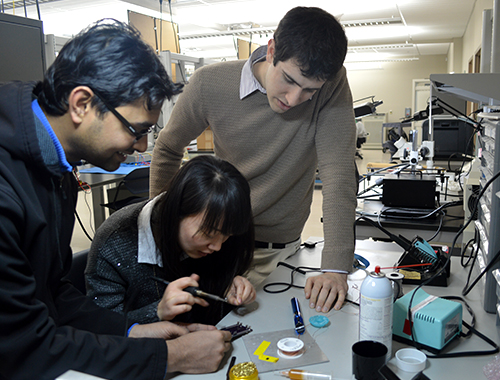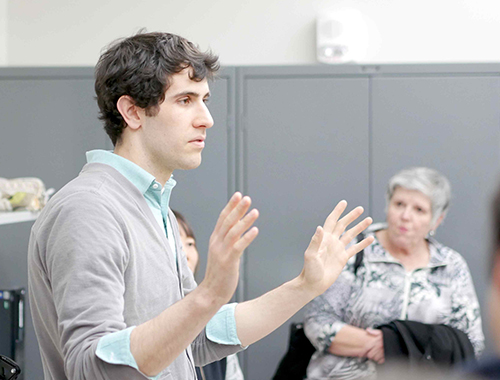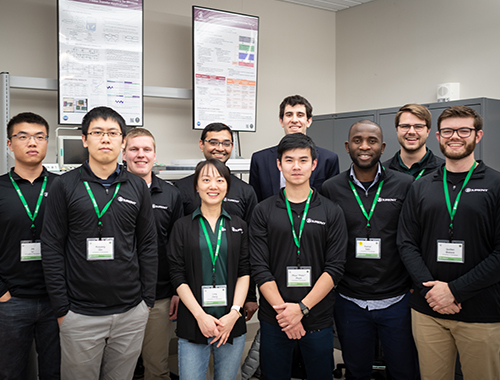
Assistant Professor Daniel Costinett wants you to lose the charger.
Whether you’re reading this on a laptop, desktop, or phone, odds are your device has recently been held captive by a wall outlet for charging. That may soon be a thing of the past, thanks to the work of the University of Tennessee’s Daniel Costinett, assistant professor in the Department of Electrical Engineering and Computer Science.
Daniel’s primary research area is power electronics: the study and design of circuits for energy devices. “Power electronics is everywhere you look, in anything energy-powered, or anything smart or with a display,” explained Daniel. This ubiquity and its potential for innovation hooked him on the subject as a doctoral student at the University of Colorado Boulder. He joined UT in 2013 after earning his PhD in Electrical Engineering.
Now he’s at work on a technology to unlock wireless power transfers for consumer electronics. Just as WiFi replaced plugged-in dial-up internet, Daniel is developing ways to enable laptops, tablets, phones, and other consumer electronics to charge wirelessly, ditching the cord and wall outlet. The key is a new approach to the design of the coil that carries the current: the new structure allows the coil to be smaller, more efficient, and hold far less radiation. As current moves through the coil, it produces a magnetic field that can pass through space and materials to transfer energy.



The wireless power technology was born out of separate experiences with Intel and Oak Ridge National Laboratory (ORNL). Working with Intel on a project for multidevice charging, Daniel became well acquainted with the problem radiation presented. In early wireless charging efforts, phone displays went haywire due to the huge surge of radiation picked up by the coil. A different coil problem confronted Daniel at ORNL, where, as a joint faculty member, he researches wireless power technologies for electric vehicles. Coils for high-powered equipment like electric vehicles are huge and inefficient, presenting the need to be tuned with the addition of a circuit element. Integrating the coil and capacitor solved this problem, boosting efficiency and lowering levels of radiation. Through his experience with both hand-held electronics and vehicles, Daniel realized the coil quandary was a key piece to unlocking the puzzle of wireless power transfers.
In working closely with UTRF, he hopes to secure a patent for the wireless power technology. It’s the latest in a long-standing partnership for research born of Daniel’s work at UT.
“Daniel’s eagerness and dedication to take his innovations to the next level have resulted in a great partnership,” says UTRF Licensing Associate Andreana Leskovjan. “We have the pleasure of working closely with him on several projects.”
Daniel now calls UTRF his “go-to” for all things related to technology transfer.
When he’s not tied up in the business of innovation, Daniel is an avid rock climber. He honed his climbing skills as an undergraduate at the University of Colorado-Boulder, where he started as a computer science major. He quickly learned that the process of building things and hardware interested him more much than programming, and he moved to the electrical engineering field. His first introduction to power electronics came as an undergraduate research assistant, working with the medical school to implant devices in epileptic mice to monitor brain activity. He helped design an implanted device that can be wirelessly powered through skin, a big improvement for both the researchers and the mice.
In addition to his research on wireless power transfers, Daniel’s other projects include improving the efficiency, size, and cost of the drivetrain in electric vehicles. This summer, he plans to help build a full-scale prototype of a wireless battery for an electric vehicle. He’s also working on a renewable energy project to design better inverters for photovoltaic energy from solar panels, making the grid more effective and durable.